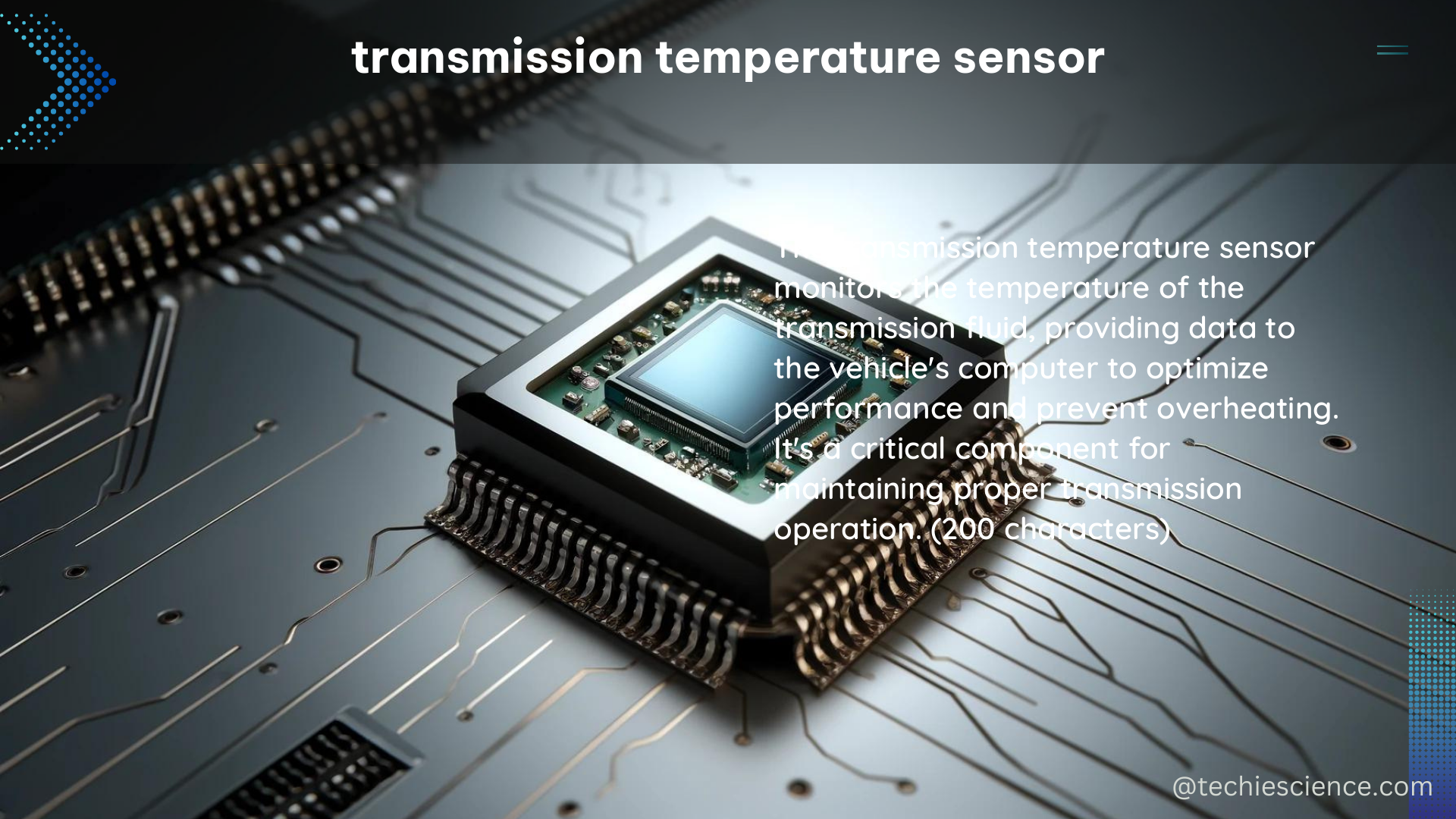The transmission temperature sensor is a critical component in any vehicle’s transmission system, responsible for measuring the temperature of the transmission fluid and relaying this information to the vehicle’s computer. This data is then used to adjust shift points and other transmission parameters, ensuring optimal performance and longevity.
Understanding Transmission Fluid Temperature Ranges
The normal operating temperature range for transmission fluid is typically between 175°F (80°C) and 220°F (105°C). However, this can vary depending on the specific vehicle and transmission type. For example, some high-performance transmissions may have a higher operating temperature range, while older or less efficient transmissions may operate at the lower end of the spectrum.
It’s important to note that the temperature reading from the transmission temperature sensor may not always match the actual temperature of the transmission fluid. This discrepancy can be due to several factors, including the location of the sensor and the thermal properties of the transmission fluid.
Sensor Accuracy and Precision

The accuracy and precision of transmission temperature sensors can be influenced by various factors, including the sensor’s design and construction. According to a patent for a temperature-compensated quantitative dimensional measurement device, the use of a thermally conductive pad can enhance the thermal communication between the thermistor (the temperature-sensing element) and the workpiece (in this case, the transmission fluid).
This suggests that the sensitivity and accuracy of the temperature sensor can be improved through the use of thermally conductive materials, which can help to minimize any discrepancies between the sensor reading and the actual fluid temperature.
Monitoring Transmission Temperature
When it comes to DIY transmission temperature sensor maintenance, it’s crucial to regularly check the transmission fluid level and condition. According to one forum post, a scan gauge measured transmission temperatures between 187°F (86°C) and 200°F (93°C) during a mixture of stop-and-go and highway driving, with ambient temperatures in the high 80s to low 90s°F (31°C to 37°C). While this temperature range is within the normal operating range, it’s still important to monitor the transmission temperature to ensure it doesn’t get too high.
Factors Affecting Transmission Temperature
Several factors can influence the transmission temperature, including:
- Driving Conditions: Aggressive driving, towing, or hauling heavy loads can increase the transmission temperature, as the transmission has to work harder to transfer power to the wheels.
- Ambient Temperature: Hotter ambient temperatures can also contribute to higher transmission temperatures, as the transmission fluid may not be able to dissipate heat as efficiently.
- Transmission Fluid Condition: Degraded or contaminated transmission fluid can reduce its ability to effectively cool the transmission, leading to higher temperatures.
- Transmission Design: Some transmission designs are more efficient than others, which can affect the overall operating temperature.
Troubleshooting Transmission Temperature Issues
If you suspect an issue with your transmission temperature sensor, there are a few steps you can take to diagnose and address the problem:
- Check the Sensor Connection: Ensure that the transmission temperature sensor is properly connected and that the wiring is in good condition.
- Inspect the Sensor: Visually inspect the sensor for any signs of damage or wear, such as cracks, corrosion, or loose connections.
- Test the Sensor: Use a multimeter to test the sensor’s resistance and ensure it is within the manufacturer’s specified range.
- Monitor Transmission Fluid Levels: Regularly check the transmission fluid level and top it up if necessary, as low fluid levels can contribute to higher temperatures.
- Replace the Sensor: If the sensor is faulty, replace it with a new one that meets the manufacturer’s specifications.
Reference
- Edge Products – CTS2 Transmission Temperature Sensor Installation
- Transmission Temperature Sensor – How It Works and Why It Matters
- How to Check Transmission Fluid
- Temperature-Compensated Quantitative Dimensional Measurement Device

The lambdageeks.com Core SME Team is a group of experienced subject matter experts from diverse scientific and technical fields including Physics, Chemistry, Technology,Electronics & Electrical Engineering, Automotive, Mechanical Engineering. Our team collaborates to create high-quality, well-researched articles on a wide range of science and technology topics for the lambdageeks.com website.
All Our Senior SME are having more than 7 Years of experience in the respective fields . They are either Working Industry Professionals or assocaited With different Universities. Refer Our Authors Page to get to know About our Core SMEs.